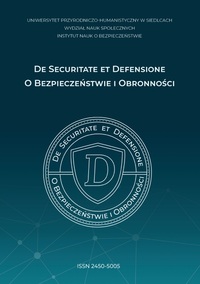Administrative Police as a Distinct Function of Public Administration
DOI:
https://doi.org/10.34739/dsd.2024.02.10Keywords:
public administration, police, services, inspections, executive authority, coercive measuresAbstract
The purpose of the article is to present the position of administrative police within the struc-ture of the modern state and administrative science. The research subject of the article is the administrative police, viewed according to the principles of administrative science as an organization functioning as a type of system. This understanding of administration is treated as a legal phenomenon. The concept of administrative police is well-known in the literature, with its bodies representing a distinct sphere of public administration and being composed of statutorily designated entities. This part of the state administration is characterized by its authoritative nature and the ability to use coercive measures against other entities when their actions or behaviors are not in accordance with the law or when security regulations are vio-lated. This is a distinctive feature through which these administrative state bodies fulfil their tasks. One may hypothesize that the administrative police consist of clearly defined public administration bodies that have legally designated control and supervisory tasks, along with the ability to apply coercive measures. To substantiate the validity of this hypothesis, the following questions can be raised: What distinguishes this part of public administration? What is the primary function of the administrative police? Which state administration bodies constitute the administrative police? What common characteristics do the bodies that can be called administrative police share? Would it be reasonable to legally and doctrinally distinguish the administrative police?




